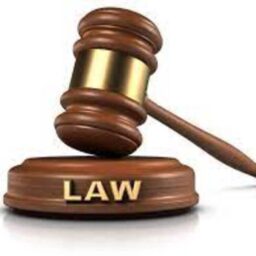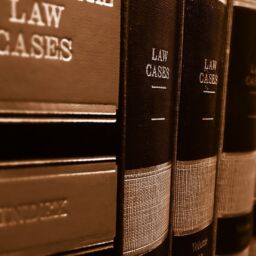INTRODUCTION
The domain name is a web address for a business entity on the Internet world. A domain name identifies a network domain. It is framed under the rule and procedures of the Domain Name System(DNS) and its name is registered under DNS of the internet. It is used in various networking contexts and for application-specific naming and address purpose. which is just like a phone number is unique for every individual. Similarly, a web address is also different for every entity. Generally, a domain name is used for making a website name which user-friendly and which redirects to an IP address, such as123.456.789. “IP(Internet protocol) addresses are just stringing numbers and it is not easy to remember”. If you want to start your website, first you need a domain name, that’s the core, a domain is your site’s address and which help people to browse it over the internet. It is all about the mixture of Primary domain, sub-domain, Top-level domain, and all these make a website. (for example, https://www.juscorpus.co.in)”. 1st one is a primary domain(protocol) https://, sub-domain is(www.), (juscorpus.) is the second-level domain, (.co) generic top-level domain name, and (.in) country code top-level domain name.
TYPES OF DOMAIN NAME
The Domain name is divided into different parts of the internet sequence. The merger of all parts of domain names makes a website. following are three types of levels;
The Top-level domain name (TLD)
“Top-level domain” is the top of the internet sequence of the domain name. And also it is the most important part of the complete web address and differentiates between types of work and countries”. Basically “Top-level domain name” is of two types:
- generic top-level domain name(gTLD)
- country code top-level domain name(ccTLD)
The Generic Top-Level Domain Name (gTLD)
“Generic” is one of the domain names in a top-level domain name that is used for the DNS, which is a facet of the domain enhancement that refers to the types of uses of the domains are studied for”.
There are some popular (gTLD):
.com – for commercial institutional purpose
.edu – for educational institutional purpose
.net – for organizations involved in internet operation such as internet service providers and network information centres.
.org – for miscellaneous and non-profit organizations.
.gov – for government entities including the royal family.
.mil – for military and defence entities.
.int – for international organizational.
The ending domain name is .com, .net, .org, are registered through many different companies authorized by international corporations for assigned names and numbers (ICANN).
Country-Code Top-Level Domain Name (ccTLD)
“It is the top-level of the internet top-level domain name that is reserved for every country, sovereign state, or dependent territory identified with a country code. Examples- .co.in(India), .co.UK(United Kingdom), and .com.au(Australia)”.
The Second-Level Domain Name (SLD)
This is the second level of the domain name. For example, if we have a URL www.juscorpus.com. As we have to know above URL, .com is a top-level domain name. and the middle one of the above URLs is a Second-Level Domain name which is “juscorpus”.
The second-Level domain is denoted to businesses, entity name. we can choose related to own businesses name, profession name or entity, etc., but always keep in mind before choosing a domain name it must be unique.
The Third-Level Domain Name (TLD)
“After SLD in the domain name sequence, the Third-Level Domain name is the next highest domain name(for example www.juscorpus.com) the third-level domain name is www. Second thing third-level domain name is also known as a sub-domain name. Third-Level domain names used for specific identification for every department in a big organization can be used as a unique third-level domain name for every department like www, www1, www2”. However, there are all types of mixed domain names which make one website that is connected through IP addresses.
How domain name is relevant to Trademark
For the better protection of domain name it should be registered under the trademarks act,1999. If the domain name is registered under the trademarks, it means that is primarily protected universally by the Internet Corporation for Assigned Name and Number (ICANN). In case anyone infringes your domain name rights, an individual has the right to file a complaint about a domain name dispute Under the Uniform Domain Name Dispute Resolution Policy (UDNRP), “at the international level”. “.in top-level domain name is operated under the authority” (INDRP). It is the national Internet Exchange of India or NIXI. Domain name infringes can be done easily domain names registration having a “first come first served” basis.
Domain name infringement can be three types:
- Cybersquatting
- Linking and Framing
- Meta Tagging
Cybersquatting
Cybersquatting is done through domain name parking. Cybersquatting is related to domain name registration that is not an intrinsic right or identical trademarks registration in its favour, with the motive to earn illegal profits to sell legal users. Under the Indian court, an individual can file suit against the cybersquatter for misusing domain names. Cybersquatting cases in India, one of the cases, are Rediff Communication limited v. Cyberbooth & Another 1999 (4) BomCR 278, they are registered with the similar domain name, “Radiff” is an infringer who is using the same name for creating confusion among the public. That is a case of passing off Rediff has the plaintiffs who filed suit for the permanent injunction against the “Radiff” under Bombay High Court grand prohibitory order.
Linking and Framing
The connection between one website to another website is called framing. A linking website, framing or hyperlinking to allow users can view easily one another site for content. But fraudulent people misuse these options for making profits. An individual can file a suit in court.
Meta Tagging
If any company used other competitors’ trademarks on their website’s meta tags, they have the risk to pay damages and also paying attorney fees if they lose in a court case.
CONCLUSION
As we know traders registered under the Trademark act, 1999, have special rights for protection against the infringer and file suit easily against those who infringe their rights, and, increasing goodwill and attracting consumers to own businesses. In the same way, websites give market place in the internet world. As well as the same domain name is also an intellectual property for the business on the internet world. Resolves the disputes of domain names like trademark infringement over the web. with the help of artificial intelligence and variegated tools, nowadays, brand owners can easily find out online trademark infringement rather than find out global infringements because Domain Names can be accessible from anywhere across the globe.
Author(s) Name: Jyoti Yadav (Vinoba Bhave University, Jharkhand)
















